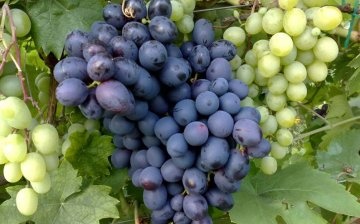New hybrid grapes or classics. Selection priorities
The wild grapes that nature gave to man has changed beyond recognition over the millennia. Thanks to scientific experiments, crossing varieties, selective selection, we have received for consumption large bunches with large fruits that have different taste qualities: sweet and tart, juicy and fleshy. Scientists and amateurs continue to experiment, and customers continue to buy their favorite berries from store shelves.
Those who decide to grow grapes at home should first of all decide on the variety. This is not a simple matter, as it might seem from the outside. Classic varieties and new hybrid forms of grapes have different properties and requirements, which should be studied in advance in order not to receive unpleasant surprises.
If you want to trade in grapes, then in the first place should not even be the taste (although, of course, we do not forget about it), but the long-term preservation, the external "marketable" appearance. For themselves, berries are chosen primarily for their taste. To make your work easier, you should pay attention to those HFs that are resistant to diseases and pests and are suitable for your climate.
Making informed choices, growers prefer time-tested and tried-and-true varieties and forms. If you buy a novelty 2-3 years old, then, of course, you run the risk of failure. But this does not stop the experimenters who have time for such "experiments" in their garden.
Sofia and Superekstra, Arcadia and Livia, Rochefort and Talisman, Flora and Nadezhda AZOS, as well as many other varieties and G.F. grapes are worthy of your attention. With quality care, each of them will give a good harvest and will delight the owner with a sweet berry.



